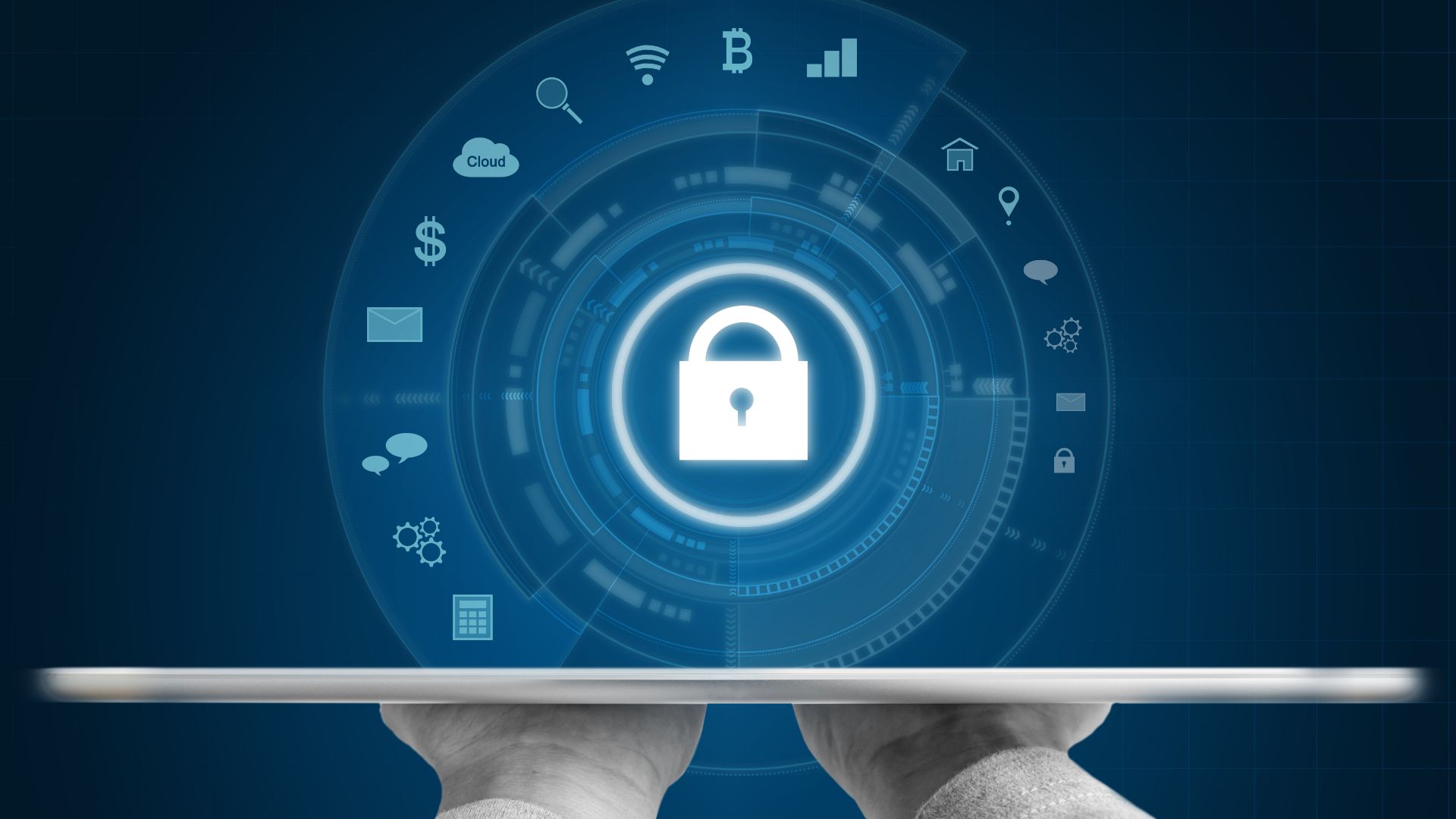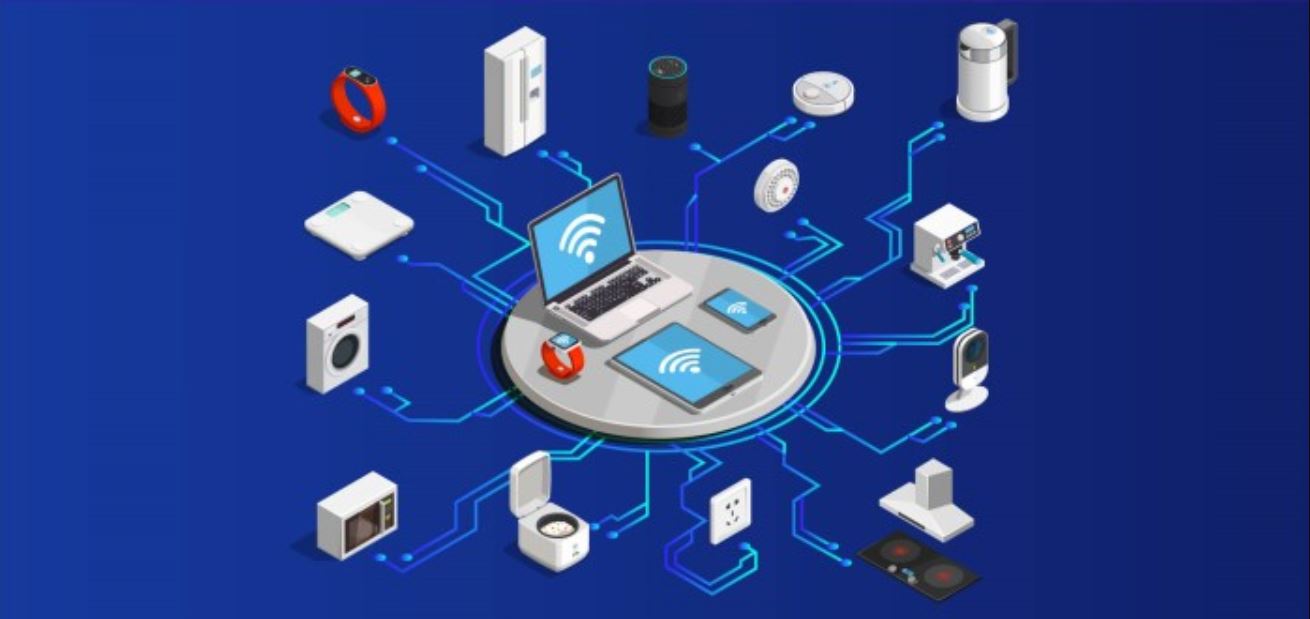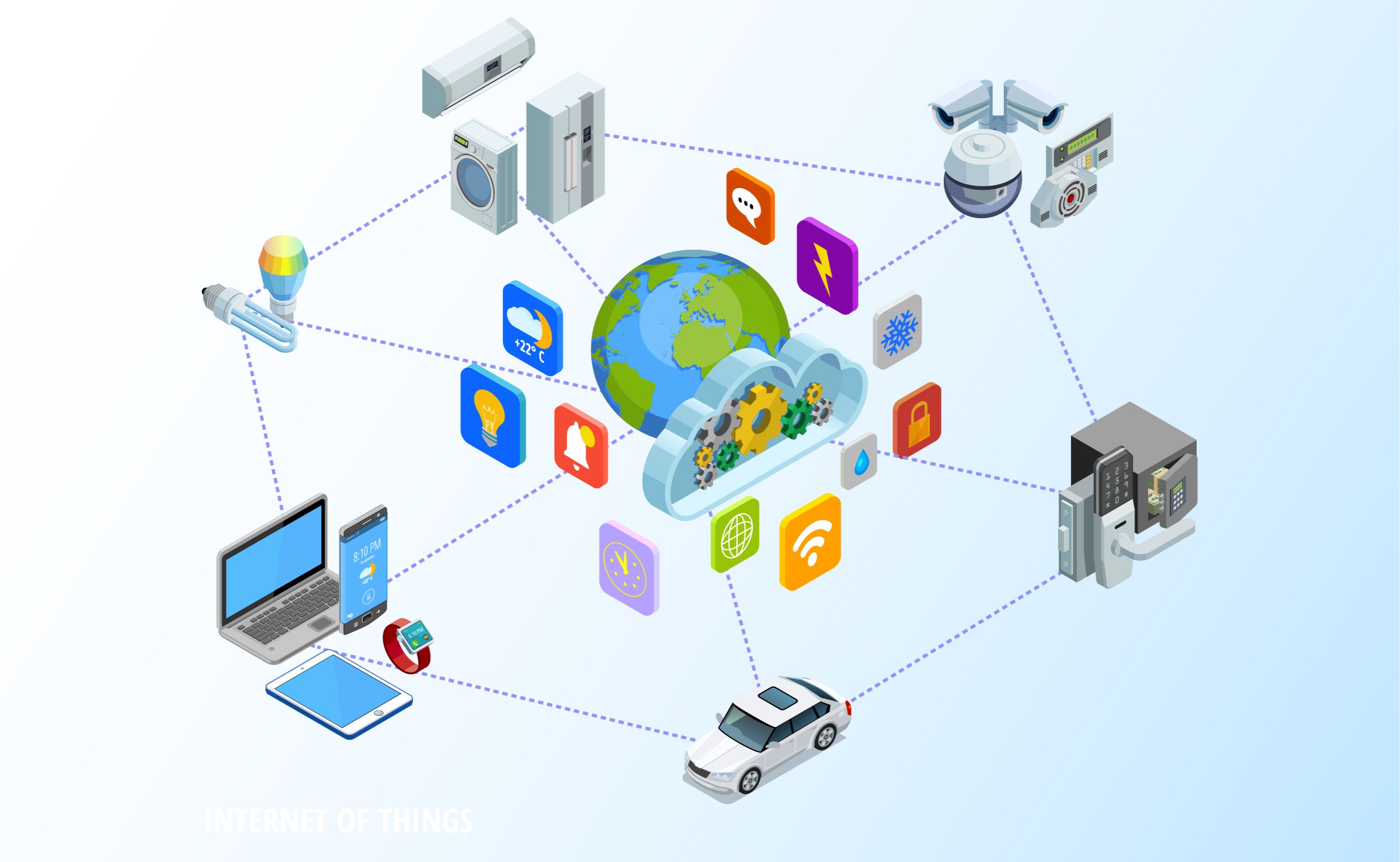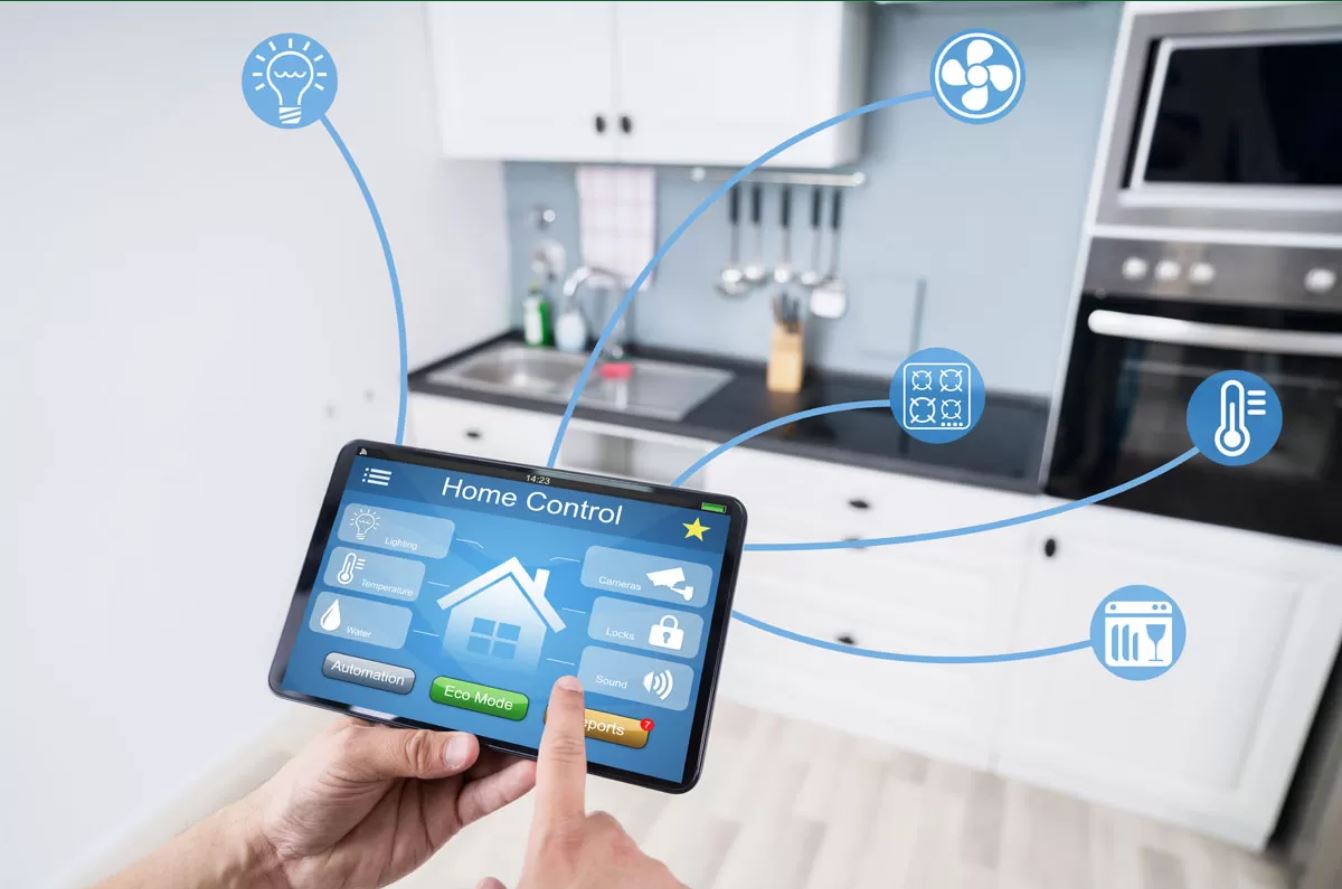Introduction
As the world becomes increasingly interconnected, the Internet of Things (IoT) has emerged as a powerful force, revolutionizing various industries and transforming the way we live and work. IoT devices, which range from smart home appliances to wearable fitness trackers, offer tremendous convenience and endless possibilities. However, this growing interconnectedness also brings about significant security risks and vulnerabilities that need to be addressed.
Securing IoT devices is of paramount importance to protect not only the users but also the larger network and infrastructure they are connected to. These devices are highly susceptible to cyber attacks due to several factors, including weak or default passwords, outdated software, and insecure communication protocols. Exploiting these vulnerabilities can lead to unauthorized access, data breaches, and even control of the entire network.
The consequences of a compromised IoT device can be severe, ranging from privacy invasion to financial loss, and even potential physical harm in cases where these devices control critical systems. The alarming increase in IoT-related cyber attacks necessitates immediate attention and stringent security measures to safeguard both individuals and businesses.
In this article, we will explore the common risks and vulnerabilities associated with IoT devices and discuss ten best practices to secure these devices effectively. By implementing these measures, individuals and organizations can significantly reduce the risk of falling victim to cyber attacks and ensure a more secure IoT ecosystem.
Importance of IoT Device Security
In today’s digital world, where IoT devices are becoming increasingly pervasive, ensuring their security is crucial. The importance of securing IoT devices extends beyond protecting personal data; it is essential for maintaining the integrity of the entire network and preventing potential cyber threats.
One of the primary reasons why IoT device security is of utmost importance is the potential for unauthorized access. When connected to the internet, these devices are vulnerable to being exploited by malicious individuals who can gain unauthorized access to personal information, control the device remotely, or even leverage it as a gateway to infiltrate the larger network.
Moreover, IoT devices often collect and transmit sensitive data, such as location information, health data, and financial details. Without proper security measures in place, this data can be intercepted or manipulated, posing significant risks to user privacy and confidentiality. A compromised IoT device not only jeopardizes personal information but also opens the door for identity theft, fraud, and other malicious activities.
The impact of an IoT security breach can extend far beyond individual users. These devices are increasingly being deployed in critical infrastructure, including healthcare systems, power grids, and transportation networks. Any compromise in the security of these devices can lead to disruptive and potentially life-threatening consequences. For instance, a hacker gaining control over medical IoT devices could manipulate patient data or disrupt critical medical procedures, putting lives at risk.
Furthermore, unsecured IoT devices can also be utilized in large-scale cyber attacks, such as Distributed Denial of Service (DDoS) attacks. By leveraging a network of compromised IoT devices, hackers can overwhelm and cripple targeted systems, causing significant disruptions and financial losses for individuals and organizations.
Given the interconnected nature of IoT devices and their potential impact, it is imperative to prioritize their security. Securing these devices goes beyond protecting personal data; it is about safeguarding the privacy, safety, and well-being of individuals, avoiding financial losses, maintaining the integrity of critical systems, and ensuring the smooth functioning of the entire network.
Common Risks and Vulnerabilities
IoT devices face a myriad of risks and vulnerabilities that make them susceptible to cyber attacks. Understanding these risks is crucial in developing effective security measures. Here are some common risks and vulnerabilities associated with IoT devices:
- Weak or default passwords: Many IoT devices come with default or weak passwords that are easily guessable or vulnerable to brute force attacks. Users often neglect to change these passwords, providing an open invitation for hackers to gain unauthorized access.
- Outdated software: IoT devices often operate on outdated software that lacks essential security patches. This makes them more susceptible to known vulnerabilities that have been addressed in recent updates.
- Insecure communication protocols: Inadequate or insecure communication protocols used by IoT devices can make them vulnerable to eavesdropping, replay attacks, or data tampering. Without secure encryption and authentication mechanisms, sensitive data transmitted by these devices is at risk.
- Lack of security updates: Manufacturers of IoT devices may not prioritize security updates or fail to provide regular firmware updates, leaving devices exposed to emerging threats.
- Third-party vulnerabilities: IoT devices often rely on third-party software or services that may have their own vulnerabilities. These weaknesses can be exploited by hackers to gain unauthorized access to the device or the network it is connected to.
- Insufficient authentication mechanisms: Many IoT devices have weak or no authentication mechanisms, making it easier for attackers to impersonate authorized users and gain unauthorized access.
- Physical vulnerabilities: Inadequate physical security measures can make IoT devices susceptible to theft, tampering, or unauthorized physical access, allowing attackers to compromise the device’s integrity.
- Overreliance on default configurations: IoT devices often come with default configurations that may not be secure. Failing to modify or customize these configurations increases the vulnerability of the device.
- Privacy concerns: IoT devices collect and transmit vast amounts of personal data. Improper handling of this data, such as insufficient encryption or insecure storage mechanisms, can lead to privacy breaches and identity theft.
- Lack of user awareness: Many users are unaware of the security risks associated with IoT devices and may not take necessary precautions, such as changing default passwords or updating firmware.
By understanding these common risks and vulnerabilities, individuals and organizations can take proactive measures to mitigate the potential threats and ensure the security of their IoT devices and networks.
Best Practices for Securing IoT Devices
Securing IoT devices requires a proactive approach that addresses the unique challenges and vulnerabilities associated with these interconnected devices. Implementing the following best practices can significantly enhance the security of IoT devices and protect against potential cyber threats:
- Strong and unique passwords: Change default passwords to strong, unique passwords for each IoT device. Use a combination of letters, numbers, and special characters to create strong passwords that are difficult to guess.
- Regular software updates: Install updates and patches provided by manufacturers regularly. Regularly check for firmware updates and ensure that the latest versions are installed to address any known vulnerabilities.
- Secure communication protocols: Use secure communication protocols such as Transport Layer Security (TLS) or Secure Sockets Layer (SSL) for transmitting data between IoT devices and other systems. Encrypting data in transit protects against eavesdropping and tampering.
- Implement multi-factor authentication: Enable multi-factor authentication (MFA) for accessing IoT devices. This adds an extra layer of security by requiring additional verification, such as a unique code sent to a mobile device, in addition to a password.
- Network segmentation and isolation: Separate IoT devices into different networks or VLANs to isolate them from critical and sensitive systems. This limits the impact of a potential compromise and reduces the chances of lateral movement by attackers.
- Use trusted and reputable IoT vendors: Purchase IoT devices from trusted and reputable vendors. Conduct thorough research and choose vendors that prioritize security, provide regular updates, and promptly address vulnerabilities.
- Monitor and analyze device behavior: Implement monitoring and analysis tools to detect any suspicious or abnormal behavior exhibited by IoT devices. This helps identify potential security breaches or unauthorized access attempts.
- Encrypt data at rest and in transit: Enable encryption for data both at rest (stored on the device or in the cloud) and in transit (while being transmitted between devices and servers). Encryption ensures that even if data is intercepted, it remains unreadable to unauthorized individuals.
- Disable unnecessary features and services: Disable any unnecessary features or services on IoT devices that are not being used. This reduces the attack surface and minimizes potential vulnerabilities.
- Secure physical access to devices: Physically secure IoT devices to prevent unauthorized access or tampering. This includes locking devices in secure cabinets or rooms and restricting physical access to authorized personnel only.
By implementing these best practices, individuals and organizations can significantly enhance the security posture of their IoT devices, minimize risks, and ensure a more secure and resilient IoT ecosystem.
#1: Strong and Unique Passwords
One of the most fundamental and essential steps in securing IoT devices is to use strong and unique passwords. Many IoT devices come with default passwords that are easily guessable or publicly available on the internet, making them susceptible to unauthorized access. By changing these default passwords to strong and unique ones, users can significantly improve the security of their IoT devices.
To create strong passwords, it is recommended to use a combination of uppercase and lowercase letters, numbers, and special characters. Avoid common and easily guessable passwords such as “password” or “123456”. Instead, opt for longer and more complex passwords that are difficult for hackers to crack.
Additionally, it is crucial to use unique passwords for each IoT device. Reusing passwords across multiple devices or accounts increases the risk of a single password compromise leading to the compromise of multiple devices. By using unique passwords, the impact of a potential breach is limited to a single device, minimizing the potential damage to the overall network.
While it may seem daunting to remember numerous complex passwords, there are password management tools available that can securely store and generate strong passwords. These tools can eliminate the need to memorize multiple passwords while ensuring the security of IoT devices.
It is important to note that changing passwords is not a one-time task. Regularly updating passwords, especially after a data breach or suspected compromise, is essential to maintain the security of IoT devices. Additionally, it is advisable to change passwords at least every 90 days as part of a proactive security practice.
Educating users about the importance of strong and unique passwords is crucial. Awareness campaigns and training sessions can help individuals understand the risks associated with weak passwords and the impact they can have on the security of IoT devices. Users should be encouraged to prioritize password security and adopt good password practices to protect their IoT devices and personal information.
By implementing strong and unique passwords for IoT devices, users can significantly enhance their security posture and reduce the risk of unauthorized access. This relatively simple yet critical step sets the foundation for a more secure IoT ecosystem.
#2: Regular Software Updates
Regularly updating the software of IoT devices is integral to maintaining their security and protecting against emerging threats. Manufacturers often release software updates and patches that address known vulnerabilities, improve functionality, and enhance overall security. Failing to apply these updates leaves devices exposed to potential exploits and compromises their security.
Software updates are crucial because they not only address known vulnerabilities but also introduce new security features and improvements. Hackers continually develop new methods to exploit IoT devices, and manufacturers respond by releasing updates to counter these evolving threats. By regularly updating the software, users ensure that their devices stay protected against the latest security risks.
To ensure effective software updates, users should enable automatic updates whenever possible. This allows devices to receive and apply new updates seamlessly, without requiring manual intervention. Enabling automatic updates is crucial as it reduces the risk of forgotten or missed updates, which can leave devices vulnerable to attacks.
While automatic updates are convenient, it is still important for users to periodically check for software updates manually. Some devices may not support automatic updates, or users may prefer to have more control over the update process. Checking for updates regularly ensures that no critical security patches are missed.
In addition to updating the device’s operating system or firmware, it is also imperative to update any associated applications or software. Many IoT devices have companion smartphone apps or desktop software that require updates to address vulnerabilities or improve functionality. Keeping these applications up to date is essential for maintaining the overall security of the IoT device.
Furthermore, users should pay close attention to end-of-life (EOL) announcements from manufacturers. When a device reaches its end-of-life, the manufacturer discontinues support and stops releasing software updates. It is critical to replace or upgrade such devices promptly to ensure continued security and protection against emerging threats.
Educating users about the importance of software updates is crucial. Users should be aware of the potential risks and consequences of failing to update their IoT devices, including increased vulnerability to cyber attacks. Manufacturers can also play a role by providing clear instructions and reminders about software updates to users.
By regularly updating the software of IoT devices, users can ensure that their devices have the latest security patches, improvements, and features. This simple yet critical practice significantly enhances the security posture of IoT devices, making them less susceptible to cyber threats. Moreover, it contributes to the overall security and integrity of the IoT ecosystem as a whole.
#3: Secure Communication Protocols
Secure communication protocols play a crucial role in protecting the data transmitted between IoT devices and other systems. Without proper encryption and authentication mechanisms, sensitive information transmitted by these devices is vulnerable to interception, tampering, and unauthorized access. Implementing secure communication protocols is essential to enhance the overall security of IoT devices.
One commonly used secure communication protocol is Transport Layer Security (TLS), which provides encryption and authentication of data transmitted over the internet. TLS ensures that the data exchanged between IoT devices and servers is protected from eavesdropping and tampering by malicious actors. By encrypting the data, TLS ensures that even if it is intercepted, it remains unreadable and secure.
Another commonly utilized protocol is Secure Sockets Layer (SSL), which serves a similar purpose to TLS. SSL establishes a secure and encrypted connection between the IoT device and the server, ensuring the confidentiality and integrity of the transmitted data.
When deploying IoT devices, it is crucial to ensure that they support the implementation of these secure communication protocols. Users should verify that the devices they purchase have built-in support for TLS or SSL to protect the data they transmit.
In addition to encryption, implementing strong authentication mechanisms is vital to secure communication. Mutual authentication ensures that both the IoT device and the server validate each other’s identities before initiating communication. This prevents unauthorized devices from masquerading as legitimate ones and accessing sensitive information.
It is important to note that IoT devices often have limited resources such as processing power, memory, and battery life. Therefore, implementing lightweight communication protocols, specifically designed for constrained devices, can strike a balance between security and resource efficiency.
Proper configuration and implementation of secure communication protocols are also crucial. Users should ensure that devices are configured to use the latest and most secure protocols available. Regularly reviewing and updating the TLS or SSL configurations to align with current best practices and cryptographic standards is important to maintain the security of IoT devices.
Furthermore, educating users about the importance of secure communication protocols is essential. Users should be aware of the risks associated with unencrypted communication and the benefits of using SSL or TLS to protect their data. Manufacturers and vendors can also play a role by providing clear instructions and guidance on how to enable and configure secure communication protocols on IoT devices.
By implementing secure communication protocols, users can greatly enhance the privacy, confidentiality, and integrity of the data transmitted by their IoT devices. This helps protect against potential eavesdropping, tampering, and unauthorized access, making the overall IoT ecosystem more secure.
#4: Implement Multi-Factor Authentication
Multi-factor authentication (MFA) adds an extra layer of security to IoT devices by requiring users to provide more than just a password for authentication. It helps prevent unauthorized access even if the password is compromised, making it a critical security measure for securing IoT devices.
MFA typically involves two or more factors of authentication, such as something the user knows (password), something the user has (smartphone or token), or something the user is (biometric data). By combining these factors, MFA significantly enhances the security of IoT devices.
One commonly used form of MFA is one-time passwords (OTP) sent to a user’s mobile device. When logging in to an IoT device, users not only need to enter their password, but also a unique code sent to their mobile device. This ensures that even if an attacker gains access to the password, they cannot log in without the additional verification code.
Biometric factors, such as fingerprint or facial recognition, can also be incorporated into MFA for IoT devices. Users can authenticate themselves by providing their biometric data, adding an extra layer of security beyond traditional passwords. Biometric authentication is particularly useful for devices with built-in biometric sensors.
Implementing MFA requires the users to enroll additional methods of authentication, which can be done during the initial device setup or through a dedicated authentication management system. Manufacturers and vendors should ensure that the implementation of MFA is simple and user-friendly to encourage widespread adoption.
While MFA provides significant security benefits, it is crucial to consider the usability and convenience of the authentication process. Users should not be burdened with complex or time-consuming authentication procedures. Striking a balance between security and user experience is important to ensure that MFA is embraced by users.
Educating users about the advantages of MFA and its importance in securing IoT devices is crucial. Users should be encouraged to enable MFA on their devices and understand how it adds an extra layer of protection to their personal and sensitive information.
By implementing multi-factor authentication, users can greatly enhance the security of their IoT devices. MFA ensures that even if a password is compromised, unauthorized access is prevented, and the integrity of the device and its data is maintained. As the threat landscape continuously evolves, embracing MFA becomes increasingly important for a robust and resilient IoT ecosystem.
#5: Network Segmentation and Isolation
Network segmentation and isolation are crucial measures for securing IoT devices and preventing unauthorized access and potential attacks. By separating IoT devices into different networks or Virtual Local Area Networks (VLANs), users can minimize the impact of a potential compromise and limit the lateral movement of attackers within the network.
Segmenting the network ensures that if one IoT device is compromised, the attacker’s access is confined to that specific segment only. This prevents them from moving laterally to other parts of the network, where critical systems or sensitive information may reside.
Furthermore, network segmentation allows users to apply different security policies and controls to each segment, based on the specific requirements of the IoT devices connected to it. This enables users to implement tailored security measures, such as firewall rules or access control, to mitigate the risks associated with each segment.
Isolating IoT devices in separate VLANs can also prevent devices from directly communicating with each other, limiting potential attack vectors. By allowing communication only through authorized gateways or specific protocols, users can reduce the risk of unauthorized access between devices and minimize the chance of lateral movement by attackers.
Implementing network segmentation and isolation requires careful planning and configuration. Users should consider the specific requirements and use cases for their IoT devices to design an effective segmentation strategy. Additionally, it is important to regularly review and update network segmentation configurations as the IoT ecosystem evolves and new devices are added or removed.
Network segmentation and isolation should not be limited to just local networks. For cloud-connected IoT devices, users should implement appropriate network segmentation in cloud environments to ensure that devices are isolated from the rest of the infrastructure and have limited network access.
Educating users about the importance of network segmentation and isolation is essential. Users should be aware of the risks associated with unsegmented networks and understand the benefits of separating IoT devices into distinct segments. Manufacturers and vendors can also provide guidance and best practices to help users implement network segmentation effectively.
By implementing network segmentation and isolation, users can significantly enhance the security of their IoT devices. This measure limits the exposure of IoT devices to attacks, reduces the impact of potential compromises, and makes it more challenging for attackers to move laterally within the network. Ultimately, network segmentation and isolation contribute to a more secure and resilient IoT ecosystem.
#6: Use Trusted and Reputable IoT Vendors
Choosing trusted and reputable IoT vendors is a critical step in ensuring the security of IoT devices. The reputation and track record of a vendor play a significant role in determining the quality and security of the devices they offer. Working with reliable vendors who prioritize security can greatly minimize the risks associated with IoT devices.
Trusted vendors invest in robust security practices throughout the entire device lifecycle, from design and development to manufacturing and support. They actively identify and address vulnerabilities, release timely security updates, and provide ongoing support to their customers.
When selecting an IoT vendor, it is important to conduct thorough research and due diligence. Look for vendors that have a strong reputation in the industry and have a history of delivering secure and reliable devices. Consider factors such as customer reviews, certifications, and the vendor’s commitment to security and privacy standards.
Additionally, vendors that prioritize transparency in their security practices and are responsive to reported vulnerabilities are preferred. A vendor that promptly addresses security concerns and provides timely patches and updates demonstrates a commitment to customer safety.
Users should also consider the vendor’s approach to secure software development and the use of secure coding practices. Vendors that follow industry best practices, such as conducting regular security audits and implementing secure coding frameworks, are more likely to produce resilient and secure IoT devices.
Purchasing from trusted vendors also reduces the risk of counterfeit or tampered devices. Untrustworthy vendors may sell devices that have been tampered with or compromised, putting users’ data and privacy at risk. By working with reputable vendors, users can ensure that they receive genuine products with the necessary security measures in place.
Trust and reputation extend beyond just the vendors themselves. It is equally important to consider the reputation of the device manufacturers and component suppliers that vendors work with. A strong supply chain with trusted partners ensures the integrity and security of the IoT devices.
Educating users about the importance of choosing trusted and reputable IoT vendors is vital. Users should be aware of the risks associated with purchasing from unknown or untrustworthy vendors and understand the benefits of working with established and reliable vendors. Industry organizations can also play a role by providing guidelines and recommendations for selecting trustworthy IoT vendors.
By choosing trusted and reputable IoT vendors, users can greatly enhance the security of their IoT devices. These vendors prioritize security, provide regular updates, and offer ongoing support to ensure the devices remain protected against emerging threats. Working with trusted vendors contributes to a more secure and resilient IoT ecosystem.
#7: Monitor and Analyze Device Behavior
Monitoring and analyzing the behavior of IoT devices is crucial for detecting any anomalous activities and potential security breaches. By actively monitoring device behavior, users can identify suspicious patterns, unauthorized access attempts, or abnormal data transmission, enabling timely response and mitigation of security threats.
To effectively monitor device behavior, users can utilize various tools and technologies. Network monitoring tools can track network traffic and identify any unusual or unauthorized connections or data transfers. These tools can provide real-time alerts and notifications for suspicious activities, allowing users to investigate and take appropriate actions promptly.
Additionally, implementing Intrusion Detection Systems (IDS) or Intrusion Prevention Systems (IPS) can help detect and mitigate potential attacks on IoT devices. These systems analyze network traffic and identify known attack signatures or behavior patterns associated with malicious activities. They can automatically block suspicious traffic or send alerts to administrators for further investigation.
Collecting and analyzing device logs is another essential aspect of monitoring IoT device behavior. Logging allows users to track device activities, including access attempts, configuration changes, and data transfers. Analyzing these logs can help identify any deviations from normal behavior and provide crucial insight into potential security incidents.
Furthermore, leveraging Artificial Intelligence (AI) and Machine Learning (ML) technologies can enhance the detection capabilities for monitoring device behavior. These advanced technologies can identify patterns, anomalies, and suspicious activities that may go unnoticed by traditional rule-based systems. By continuously learning from device behavior data, AI and ML algorithms can refine detection accuracy and improve overall security.
It is important to establish clear processes and procedures for responding to security events detected during device behavior monitoring. This includes defining roles and responsibilities for incident response, isolating compromised devices if necessary, and implementing a robust incident management framework.
Educating users about the importance of monitoring and analyzing device behavior is vital. Users should understand the potential risks associated with unmonitored devices and the benefits of proactive monitoring in detecting and mitigating security incidents. Regular security awareness training can help users recognize the signs of potential security breaches and take appropriate actions.
By actively monitoring and analyzing device behavior, users can detect and respond to potential security threats in a timely manner. This proactive approach allows for the mitigation of security incidents and ensures the overall security and integrity of IoT devices and the larger network they are connected to.
#8: Encrypt Data at Rest and in Transit
Encrypting data at rest and in transit is a critical security practice to protect sensitive information transmitted or stored on IoT devices. Encryption converts data into a format that can only be accessed with the proper decryption key, ensuring its confidentiality and integrity. By implementing strong encryption, users can mitigate the risk of unauthorized access or data breaches.
Data at rest refers to information stored on IoT devices or in databases or cloud storage. Encrypting data at rest ensures that even if an unauthorized entity gains physical or logical access to the device or storage medium, the data remains encrypted and unreadable.
Various encryption algorithms are available, such as Advanced Encryption Standard (AES) or RSA, which use encryption keys to lock and unlock the data. It is crucial to use strong encryption algorithms and key management practices to protect against brute-force attacks or key compromise.
Encrypting data in transit refers to securing the communication channels between IoT devices and remote servers or other devices. Encryption protocols like Transport Layer Security (TLS) or Secure Sockets Layer (SSL) establish secure and encrypted connections, ensuring that data transmitted over the network remains confidential and tamper-proof.
To ensure effective encryption, it is crucial to use encryption keys that are unique, long, and complex. Additionally, regularly updating encryption keys enhances security by mitigating the risks associated with compromised or weak keys. Encryption key management practices, such as secure storage and regular rotation, should be followed to maintain the integrity of the encryption process.
It is important to note that encryption introduces additional processing requirements, which can impact the performance of resource-constrained IoT devices. Users should consider the trade-off between security and performance and select encryption algorithms and key sizes suitable for the capabilities of their devices.
Educating users about the importance of data encryption is crucial. Users should understand the risks of transmitting or storing sensitive data in plain text and the benefits of encrypting their data. Encouraging secure practices, such as using encryption software, implementing secure protocols, and following key management best practices, is vital to ensuring the security of IoT devices and the data they handle.
By encrypting data at rest and in transit, users can significantly enhance the confidentiality and integrity of their data. Encryption prevents unauthorized access to sensitive information and safeguards it from interception or tampering. Implementing strong encryption measures contributes to a more secure and resilient IoT ecosystem.
#9: Disable Unnecessary Features and Services
Disabling unnecessary features and services on IoT devices is an important security practice that helps reduce the attack surface and minimize potential vulnerabilities. Many IoT devices come with a wide range of built-in features and services that may not be essential for their intended functionality. By disabling these unused or unnecessary features, users can significantly enhance the security of their IoT devices.
Unnecessary features and services can serve as potential entry points for attackers. These features may have vulnerabilities or weaknesses that can be exploited to gain unauthorized access or control over the device. By disabling them, users eliminate these potential risks and reduce the attack surface available to malicious actors.
Users should carefully review the features and services offered by their IoT devices and assess their necessity. For example, if a device has a built-in web server but does not require remote access, it is advisable to disable the web server functionality to eliminate the risk of web-based attacks.
Additionally, users should disable any default or insecure protocols that are not needed. Many IoT devices come with default settings that may use insecure protocols or weak encryption. These defaults should be changed, and only secure and well-established protocols should be enabled to ensure a higher level of security.
Regularly reviewing and updating the device’s firmware or software is crucial to identify and disable any newly discovered vulnerabilities or deprecated features. Manufacturers often release updates and patches that address security issues and may include options to disable features that are no longer secure or necessary.
Users should also consider the privacy implications of enabling certain features or services. Some features may collect and transmit sensitive data unnecessarily, increasing the risk of privacy breaches. Disabling these features or adjusting their settings can help protect user privacy.
Educating users about the importance of disabling unnecessary features and services is essential. Users should understand the potential risks associated with these features and the benefits of reducing the attack surface and minimizing vulnerabilities. Providing clear instructions and guidelines on how to disable features or adjust settings can empower users to take necessary security measures.
By disabling unnecessary features and services, users can significantly enhance the security of their IoT devices. This practice reduces the potential attack vectors and minimizes the risk of exploitation. Taking a proactive stance by disabling unused features contributes to a more secure and robust IoT ecosystem.
#10: Secure Physical Access to Devices
Securing physical access to IoT devices is a critical aspect of their overall security. Physical security measures are essential to prevent unauthorized individuals from tampering with or gaining direct access to the devices. By implementing robust physical security practices, users can protect against physical attacks and reduce the risk of device compromise.
One of the primary physical security measures is to physically secure IoT devices. This can include locking devices in secure cabinets, enclosures, or rooms to prevent unauthorized access. Physical barriers act as a deterrent and make it more difficult for attackers to gain physical access to the devices.
Users should also consider the location and placement of IoT devices. Placing them in secure areas, away from public access or high-risk areas, enhances their physical security. Devices should be positioned in such a way that they are not easily visible or accessible to unauthorized individuals.
Tamper-evident measures can also be implemented to detect and deter tampering with the devices. For example, seals or stickers can be placed on the devices to indicate if they have been opened or tampered with. Regularly checking these indicators can help identify potential unauthorized access attempts or compromises.
In addition to physical security measures, it is important to consider the security of device connectivity ports and interfaces. Users should disable unused ports or seal them to prevent physical access through these entry points. Restricting access to essential ports and interfaces reduces the risk of physical attacks.
Physical security measures should also include proper disposal of IoT devices. When disposing of devices, users should ensure that all data is securely wiped from the devices. This can involve resetting the devices to factory settings or using data wiping tools to completely erase any sensitive information.
Educating users about the importance of physical security is vital. Users should understand the risks associated with physical access to IoT devices and the potential consequences of unauthorized tampering. Awareness campaigns can promote good physical security practices and provide guidance on implementing physical security measures.
By securing physical access to devices, users can safeguard their IoT devices from physical attacks and unauthorized access. This layer of protection complements other security measures and ensures the overall security and integrity of IoT devices and the data they handle. Prioritizing physical security contributes to a more robust and resilient IoT ecosystem.
Conclusion
Securing IoT devices is of paramount importance in today’s interconnected world. With the growing number of IoT devices and the potential risks they pose, implementing effective security measures is crucial to protect individuals, organizations, and the entire network.
Throughout this article, we have explored ten key best practices for securing IoT devices. These practices include using strong and unique passwords, regularly updating software, implementing secure communication protocols, enabling multi-factor authentication, utilizing network segmentation and isolation, choosing trusted vendors, monitoring and analyzing device behavior, encrypting data at rest and in transit, disabling unnecessary features and services, and securing physical access to devices.
By following these best practices, users can significantly enhance the security posture of their IoT devices. Strong passwords, regular software updates, and secure communication protocols protect against unauthorized access and data breaches. Multi-factor authentication and network segmentation add additional layers of security, while choosing trusted vendors and monitoring device behavior ensure ongoing protection. Encrypting data at rest and in transit safeguards sensitive information, while disabling unnecessary features and securing physical access reduce potential vulnerabilities. When combined, these practices create a comprehensive security framework for IoT devices.
Furthermore, educating users about the importance of IoT device security, promoting awareness of potential risks, and providing guidance on implementing security measures are critical steps in creating a more secure IoT ecosystem. Manufacturers and vendors play a crucial role by designing and producing devices with security as a top priority, providing regular updates, and addressing vulnerabilities promptly.
Securing IoT devices requires a collaborative effort involving users, manufacturers, and industry stakeholders. By implementing these best practices and staying vigilant against emerging threats, we can enjoy the benefits of IoT while also keeping our devices and networks secure. With a proactive and security-oriented approach, we can pave the way for a safer, more interconnected future.

























